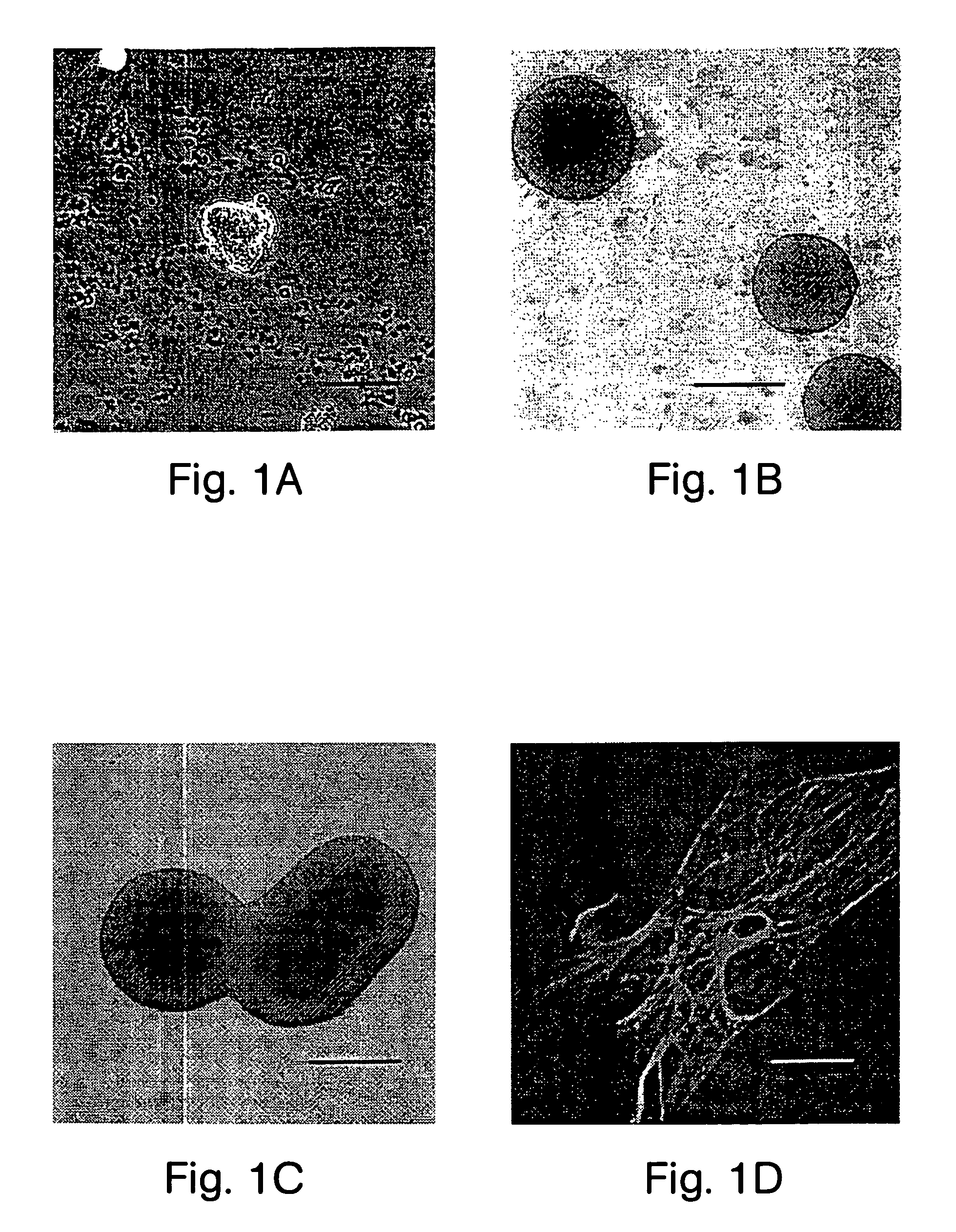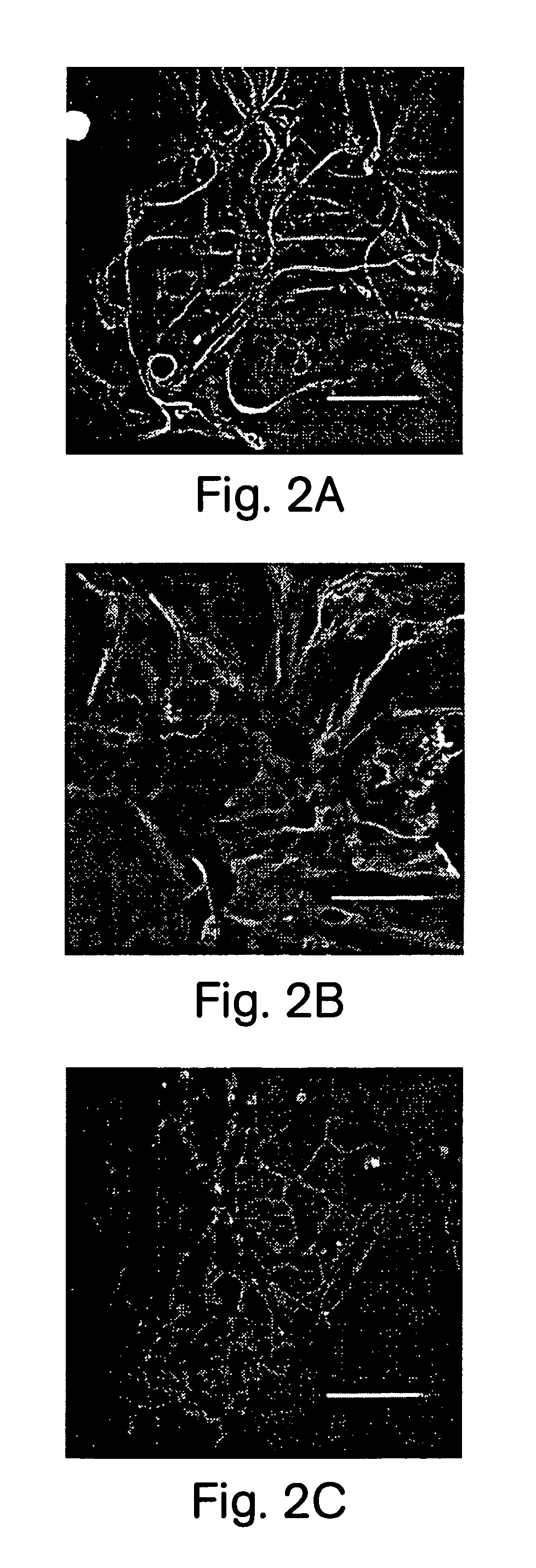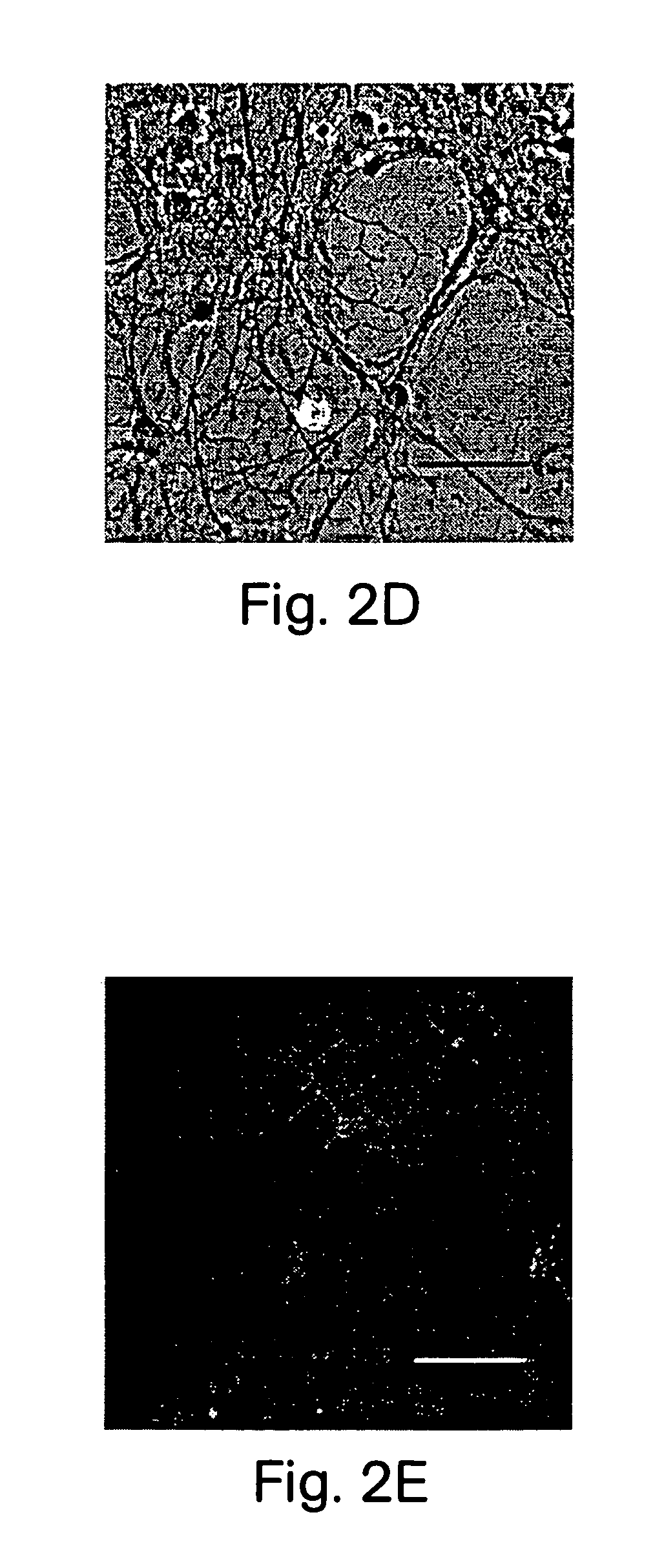Pharmaceuticals containing multipotential precursor cells from tissues containing sensory receptors
- Summary
- Abstract
- Description
- Claims
- Application Information
AI Technical Summary
Benefits of technology
Problems solved by technology
Method used
Image
Examples
example 1
Isolating Multipotential Precursor Cells from Postnatal Olfactory Epithelium of Mice
[0092]Postnatal mice were stunned with a blow to the head and then decapitated. The heads were sagitally sectioned with a razor blade. The olfactory epithelium of about 6 postnatal (P 1–9) mouse pups were stripped from the conchae, nasal septum, and vomeronasal organs using watch-maker forceps. This tissue was placed into 3 mls of media (DMEM / F-12 1:3 (Hyclone media) supplemented with 2% B-27 (Gibco), 20 ng / ml EGF (Collaborative Research), 0.1% fungizone, 0.5 ml / 100 ml penicillin / streptomycin (Gibco). After epithelium from the postnatal pups was collected, the epithelium was teezed apart with watch maker forceps, releasing a large number of single cells. The media was transferred to a 15 ml tube, and 7 ml more media was added. The cells were dissociated into single cells, by titration with 10 ml plastic pipette (Falcon), and passed through a 60 micron filter (Gibco). Typically dissociated cells from ...
example 2
Differentiating Precursor Cells Into Neurons Astrocytes and Oligodendrocytes
[0096]After the cellular clusters of Example 1 had been generated they could be differentiated into neurons, astrocytes, and oligodendrocytes. Clusters from cultures 7 to 14 days after isolation were plated down onto polylysine coated 35 mm culture dishes (Falcon) and 4 multiwell culture dishes (NUNC), in DMEM / F12 media containing 2% fetal bovine serum (Hyclone) and 2% B-27 (no EGF). Media was changed every 3–4 days. Over the next 6–19 days cells migrated out of the olfballs onto the dish surface. Some of these cells had the morphology of neurons, astrocytes, or oligodendrocytes. We determined the phenotype of these cells using marker antibodies to glial fibrillary acid protein (GFAP) (FIGS. 2A, B) for astrocytes, antibodies to neurofilament 160 (NF-160) (FIG. 3A), β III tubulin (FIG. 3G), NeuN (FIG. 3H) for neurons, and antibodies to galactocerebroside (GC) (FIGS. 2C–E) for oligodendrocytes. Antibodies to t...
example 3
Isolating Multipotential Precursor Cells from Olfactory Epithelium of Adult Mice and Adult Rats
[0101]Similar proliferating cells were also isolated from adult mouse and rat olfactory epithelium and vomeronasal organs. We developed techniques for reproducibly culturing, passaging, and differentiating the adult olfballs, on the basis of our experience with their juvenile equivalents. As part of this aim, we (i) characterized the growth factor and media requirements for the adult cells to proliferate in culture, and (ii) characterized the growth factor and substrate requirements for the differentiation of oligodendrocytes and dopaminergic neurons from both adult and juvenile olfballs. We were informed in these studies by similar work on EGF- and FGF-dependent stems cells from the CNS, since olfballs likely respond to at least some of the same growth factors. The adult isolation procedures were essentially the same as for the postnatal olfballs (described in examples 1 and 2).
[0102]Adul...
PUM
 Login to View More
Login to View More Abstract
Description
Claims
Application Information
 Login to View More
Login to View More - R&D
- Intellectual Property
- Life Sciences
- Materials
- Tech Scout
- Unparalleled Data Quality
- Higher Quality Content
- 60% Fewer Hallucinations
Browse by: Latest US Patents, China's latest patents, Technical Efficacy Thesaurus, Application Domain, Technology Topic, Popular Technical Reports.
© 2025 PatSnap. All rights reserved.Legal|Privacy policy|Modern Slavery Act Transparency Statement|Sitemap|About US| Contact US: help@patsnap.com



